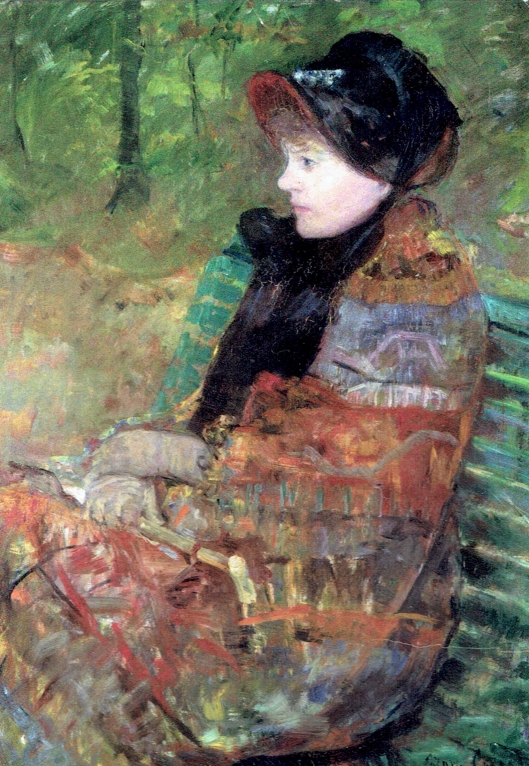Tags

Chateau Beaufresne © L Peat O’Neil
Mary Cassatt lived at Chateau de Beaufresne in the town Le Mesnil-Theribus in the Oise, north east of Paris for the latter part of her life.
She first saw the Chateau in 1891 while the Cassatt family summered at Chateau Bachivillers a few kilometers away.
Cassatt learned that the 17th c. hunting lodge known as Chateau de Beaufresne was for sale and began inquiries.
During the summer of 1892, Mary again rented nearby Chateau Bachivillers while she painted the three enormous panels for the mural “Modern Woman” for the Chicago

Mary Cassatt’s mural for the Chicago World’s Fair, 1893.
World’s Fair which opened May 1, 1893. The mural measured 58 feet by 12 feet and evidently was mishandled and lost after the Exposition closed October 30th.
The timeline for Mary Cassatt’s life at the National Gallery of Art website states she acquired Chateau de Beaufresne in 1894, but another source (McKown, Robin. The World of Mary Cassatt, Thos. Crowell Co. 1972, p. 140.) indicates she was already directing repairs and renovations at the Chateau de Beaufresne during the summer of 1892 while she was renting the nearby Chateau Bachivillers.

Lydia Cassatt, sister of the artist Mary Cassatt.
Many artists and collectors visited Cassatt during the years she lived at her beloved country home. Among them, Mary’s devoted friend, the painter Edgar Degas often visited.
In 2002, I visited the Chateau to follow the footsteps of this beloved American painter.

© L Peat O’Neil, 2002
The modest-sized chateau is set in swathe of lawns and woods with a stream cutting across the lower estate. The building is currently used as an agricultural education center. When we arrived by car from nearby Gerberoy, students of the eco-institute were slamming a soccer ball around on the back lawn. A few were sitting on upper window sills, a perch with a hawk’s view of arriving visitors.
The rear chateau is open to the sunshine while the front is shadowed by tall trees. Two towers rise on each side of the chateau’s façade, each topped with a cupola. External modern staircases are affixed to the towers, for exit in case of fire.

Travel Journal page with sketch of Mary Cassatt’s tomb and layout of Chateau de Beaufresne estate. © L. Peat O’Neil, 2002

Mary Cassatt at Chateau Beaufresne, 1925. Image source: American Archives of Art https://www.aaa.si.edu
Mary died June 14, 1926. Her grave is in the village cemetery accessed by a footpath from the Chateau. A small patch of dark evergreen bushes shields the Cassatt family tomb.

Country lane leading from Ch. Beaufresne to the Cassatt Family Tomb in the cemetery of Le Mesnil-Theribus, a village in the Oise district of France.
The grave tablets are plain granite which time has covered with lichen. On the stones are carved the names Mary, Lydia, Mother, Father, Robert.
Resources:
NYPL program on Cassatt and the 1893 World Exposition in Chicago.
McKown, Robin. The World of Mary Cassatt, Thos. Crowell Co. 1972
American Archives of Art -photo of Mary Cassatt at Chateau Beaufresne








